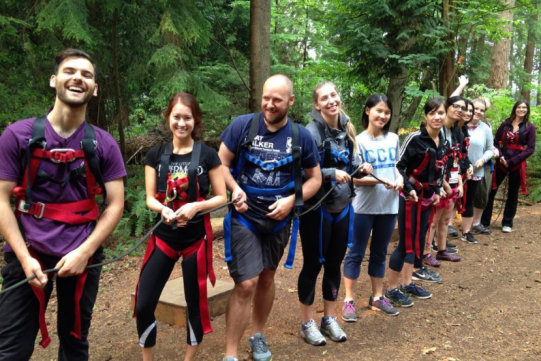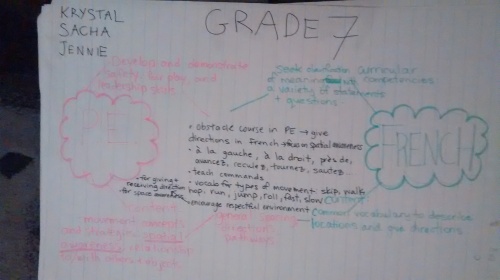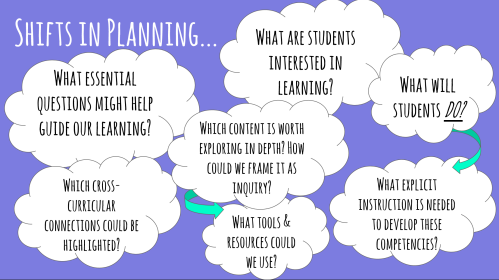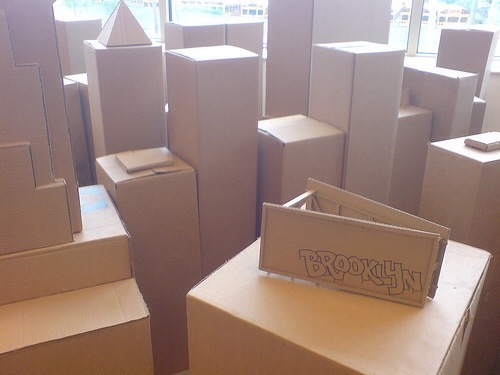This past week in our Inquiry class, teacher candidates participated in a mini inquiry designed to integrate disciplines and active many of the core competencies in BC’s redesigned curriculum. For many, it was an engaging and useful activity, as it modeled how we might not always open an inquiry with the actual inquiry question! I think it’s important that teachers understand that we don’t expect students to jump in unarmed with skills and tools to help them be successful. Below is a general outline of our process.
Learning Intention: I can make detailed observations about my local environment.
Experiences:
- Sharing photos of plants and making observations as a group
- Nature walk where students took photos of plants they observed in our surroundings
- Sharing out observations in small groups
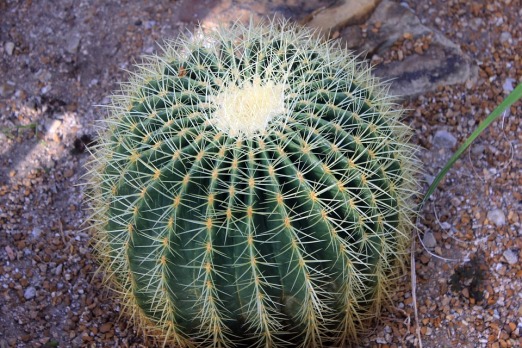
What do you notice about this plant? How would you describe its physical characteristics?
Learning Intention: I can use creative thinking to transform a physical characteristic into a personality trait.
Experiences:
- Teacher modeling of a short story “Chloe the Cactus”
- Writing a brief story about one of your chosen plants and what its physical characteristics might look like if it were a person
Once we had developed some of the key skills required to engage in the final experience, we introduced the inquiry question.
What plant best represents you?
Learning Intention: I can make a meaningful connection between a plant and my personal identity.
Criteria:
- Artistic representation is 2D or 3D and includes at least 2 different media.
- Connection is about the real, inside you – your essence (i.e. not your physical appearance).
- Description includes at least 3 thoughtful reasons why your plant represents you.
During this final stage of the process, teacher candidates engaged in their own online research to help select their plant. In a classroom setting, we discussed how we would need to provide more scaffolding at this point. It would be a great opportunity to teach digital literacy and credibility of sources through a model such as Get REAL. Some questions that helped guide our research were:
Where does your plant thrive? What else grows nearby?
What does your plant need to survive?
What are its physical characteristics?
What are some unique features of your plant that make it different from others?
This process was really beautiful to watch, as many of my teacher candidates used this as an opportunity to really reflect on their true selves. It is a good reminder that inquiry doesn’t have to be something overly complicated, but it can certainly be beautiful! Below are a few examples of the work that came out of this mini, teacher-guided inquiry. I hope they and the process inspire others to see how we might approach developing Core Competencies in a meaningful, inquiry-based way.
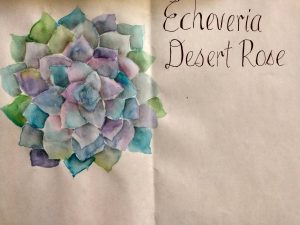
Succulent plants are known to be found growing in mild and warm climates and do not require frequent watering. Cold weather does not suit these kinds of plants. The desert rose succulent best represents me in terms of the climate of situations I have faced. Similar to the desert rose succulent, I have built enough resilience that I do not need frequent “watering” to combat a situation. The succulent resembles a colourful flower but its exterior is tough and thick, which is similar to how I view myself; vibrant and carefree but also tough enough that I can withstand and get through stress and pressure from all aspects of my life (school, work, social life). The individual I am on the inside likes to stand outside of the box, not inside, and likes to be unique in small but meaningful ways. The plant is different in the sense that it stands out from other cacti and succulents but not in an overwhelmingly neon-coloured way.
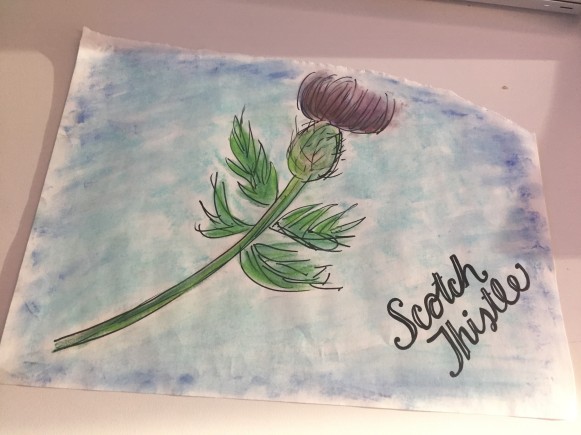
I found this decision quite easy, and associated myself with a Scotch Thistle quite quickly. My reasoning behind this is that this plant is nature to the Scottish highlands, the place in the world I feel most calm and happy. I, like the thistle, prefer wet and cold climates, to the sun. Thistles also are weeds, and tend to grow in the wilderness. Though they can come close to society they prefer to be on the outskirts and watch. Thistles also grown close to each other and other plants, but flower and leaf at the end of their stems, which are long. I connected to this because although I like to be near people, and to have people close, I like to have my distance as well, and am, at heart an introvert. Finally, thistles protect themselves by being bristly, and spiky. I too like to protect my inner self, and tend not to like to open up to many.
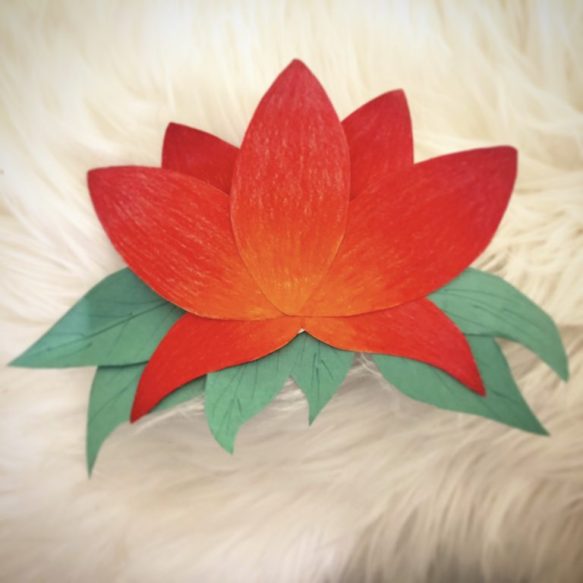
I ended up choosing a lotus flower. The obvious reason being that I literally have them tattoo’d on my shoulder. However, the lotus flower is quite a symbolic flower – which is what drew me to them enough to get a few permanently inked into my skin. In the buddhist culture (and I want to declare that I am not buddhist, nor am I trying to steal part of their culture) lotus flowers are a symbol of purity as it is a flower that physically has to push up through the mud to bloom into something so tranquil and part of this reason is why it also represents patience. The structure of a lotus contains multiple layers of petals that protect its core centre. I feel like we can relate to these characteristics of a lotus. Like others, I feel as though I have had to push through the mud multiple times in my life to be the person that I am now. While I try incredibly hard to be patient, and would label myself as patient, it is still a quality I would like to have more of. The structure of the lotus is something I feel as though I can use to describe myself as well: I have a true inner self that protected by my outer layer personalities. I present myself as outgoing, funny, sarcastic, and confident – but these are just the outside petals I’m not afraid to show. As so many people do, the more vulnerable parts of myself I keep tucked away behind those petals. The firey red colour of this lotus also holds a meaning. A red lotus, according to the buddhist faith, symbolizes emotional attachments of the heart. I find that I can be quite an emotionally attached person and try to live life with passion and compassion.
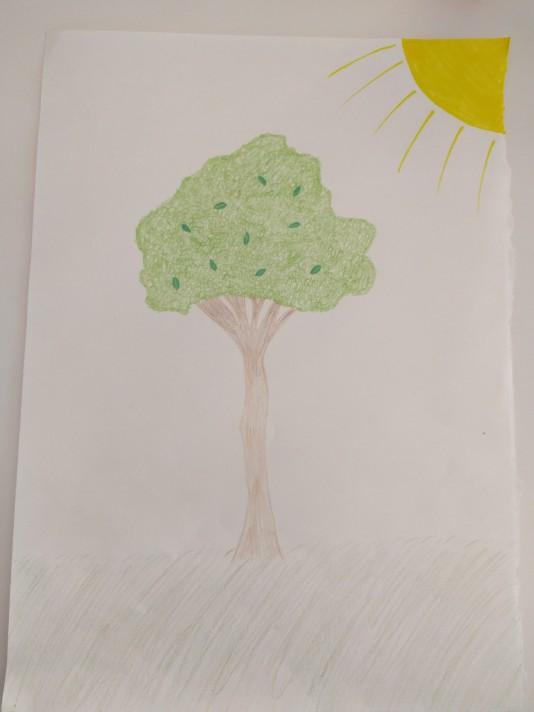
I would be a lime tree. I chose a lime tree for a number of reasons:
The first is that my name, Linnea, means lime tree in Scandinavian, so I have always had an unusual fondness for lime trees despite not caring all that much for limes. But having looked a little more into the plant itself, I uncovered a few similarities beyond simply the name.
Because it is a tree, it appears strong and sturdy. However, lime trees actually require considerable care and support (such as consistent watering) in order to thrive. They are “heavy feeders” which require regular fertilization (I love to eat!). While they will still produce limes in colder weather, these limes would be small and dry, and few in number. Lime trees produce the most and best fruit in warm climates!
In all, while lime trees appear to be hardy and resilient, they are actually quite needy. They need lots of care, support, food, and warm weather to be the happiest trees they can be! I feel like this description also fits my own personality quite well.
Credit given to Yvonne Dawydiak for the original inquiry question and art activity: What plant best represents you?

